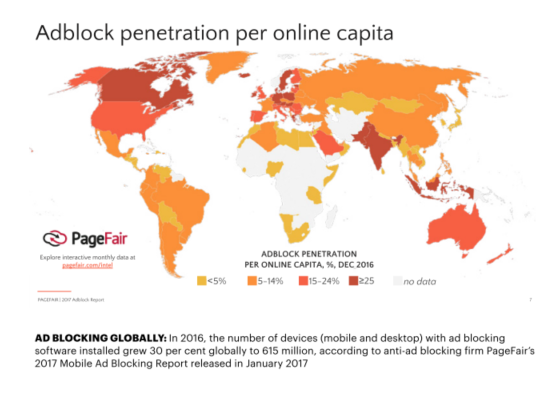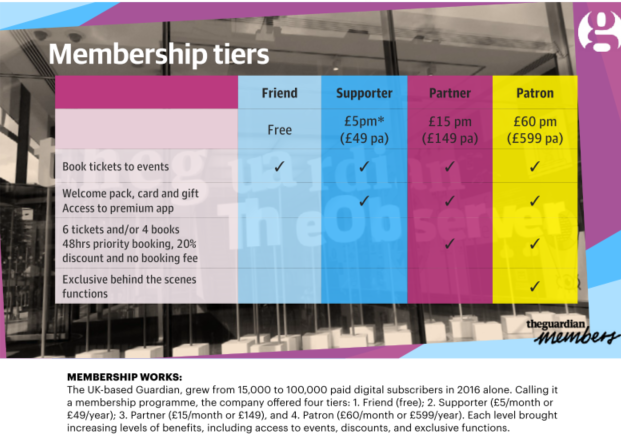“I make money the old-fashioned way: I was very nice to a wealthy relative right before he died.”
That famous quote from Malcolm Forbes kicks of FIPP’s 2017-2018 Innovation in Magazine Media World Report. While it’s meant to be cute, it has some relevance to magazine media in 2018. For many brands, they seem stuck in that loop of relying on their “wealthy relative” – i.e. their former business model. Meanwhile, that relative is, at best, on life support.
We’re talking about the ad-based revenue stream, of course.
“The media’s near-total reliance on advertising proved crippling when that primary source of revenue starting dropping precipitously,” the report notes. “If there had been multiple sources of revenue, the ad loss could have been absorbed more easily.”
The answer, according to FIPP, is to diversify. They offer 14 specific strategies to do this, from digital advertising to branded content, native ads, messaging aps, video ads, and the like. Many of these suggestions center on feeding the digital ad beast.
Some in the industry say that’s just a bad idea.
“Many publishers … hope to find a way to replace declining print revenues with online revenue,” says The Economist deputy editor and digital strategy head Tom Standage, cited in the report. “This is a fantasy; ad incumbent print publishers who try to move to a digital-ad model are mostly doomed to failure.”
We have to agree, having seen the beast that is the Facebook/Google duopoly, and the broken digital ad model.
“Publishers live in hope that some new kind of advertising will be invented that will somehow pay the bills. It seems unlikely. Video advertising, native advertising and other forms of online ad spending in the west now goes to Google and Facebook, not to publishers.”
Tom Standage, The Economist deputy editor and head of digital strategy
Standage’s answer is surprisingly simple: Reader revenue.
Let’s break this down a bit. We know the ad blocking tsunami is still building. It’s inevitable that U.S. audiences will continue to take up ad blocking — security concerns, annoyance factors and constant interruptions getting to be too much. If one out of four of your readers are blocking now, expect that to double in just a few years.

Image source: FIPP Innovation in Magazine Media 2017-2018
Some sites, like Forbes for example, get good results by simply asking readers to turn off their blockers in exchange for an “ad-lite” experience. The content is good enough that many of their users are willing to do just that. And that leads us directly to Standage’s recommendation, as publishers consider their options.
“Conferences? Travel? Financial services? Philanthropic supporters? Diet clubs? All these have been tried,” Standage says, “but again the resulting revenues are merely incremental.
So what’s left? The obvious answer is to ask readers to contribute, according to Standage.
If the content’s good enough that they’d turn off their ad blocker, then it’s good enough that they’d consider paying for it.
According to the FIPP report, some companies are seeing solid success with reader payments.
“The Atlantic, New York Magazine, and Bloomberg Businessweek all experienced subscription revenue in 2016 that was in the neighborhood of 60 percent of total revenue, according to Pew Research.”
The Washington Post, Wall Street Journal, and New York Times all charge for online access, the report notes. And nearly a third of US dailies are making money selling access to their content online.
For Lydia Polgreen of NYT Global, she sees this as a very positive sign. “As someone who cares deeply about independent journalism, I love the idea that our most important financial relationship is with the reader, not the advertiser,” she says in the report. And those readers are gaining more than just access to content, but access to the publisher’s insider community, as the Guardian’s membership tiers show:

Image source: FIPP Innovation in Magazine Media 2017-2018
This past year we’ve seen young subscribers flocking to paid news content, as they turn away from the fake news debacle on digital. We’ve seen print magazine readers embracing new, higher quality versions of their favorite titles, and snapping up new releases at the newsstand.
The idea of supporting real journalism is increasingly relevant, as we realize just how bad we are at spotting fake news.
For media brands, this kind of user support has a secondary benefit – it makes their audience more attractive to their sought-after advertisers, as they realize the power of an engaged and loyal community.
The FIPP resource is a great read for publishers looking for new ideas. I’m not saying the other 13 suggestions won’t work – we are firm supporters of strategic diversification. It does make a very powerful case for reader-supported content, however. We have to stop thinking of this as a last resort but as a highly viable revenue source.
